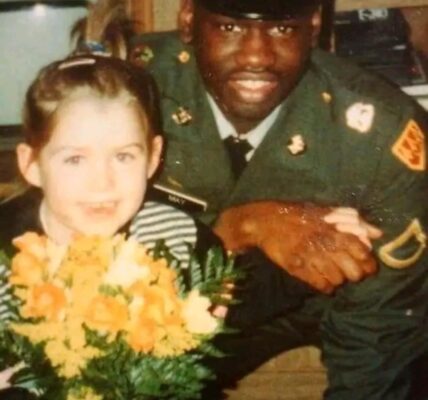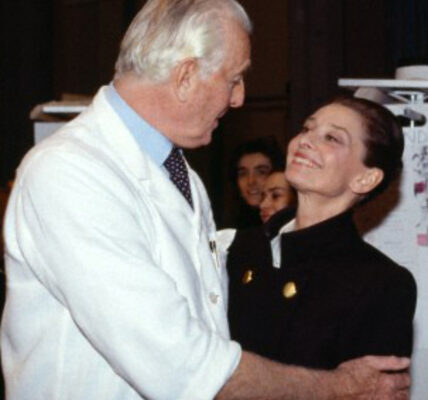It was January 7, 1967 — a hot, restless day in Pleiku, Vietnam. The air trembled with the low, steady thump of helicopter blades, the sound that defined the war as much as the gunfire and the silence that followed it. And somewhere among those soldiers, writers, and ghosts of memory stood a man who had already captured the heart of America with words — John Steinbeck.
He was 64 then, long past the days of “The Grapes of Wrath,” but still restless, still curious, still hungry to understand the human spirit in its rawest form. When the opportunity came to fly with the 1st Squadron, 10th Cavalry — D Troop — he didn’t hesitate. He climbed aboard a UH-1 Huey, the same helicopter that had carried countless young men into battle and, too often, brought them back draped in silence.
The rotors spun, the earth fell away, and the old writer found himself suspended between heaven and hell — Vietnam spread below like a wounded tapestry. He wasn’t there as a reporter or a soldier, but as something in between: a witness to courage, grace, and the strange beauty that sometimes blooms amid destruction.
In a letter home, Steinbeck would later write about that moment. His words, tender and trembling with awe, captured something that no war correspondent could — the poetry of motion, the quiet reverence of men who flew through chaos with the precision of artists.
“I wish I could tell you about these pilots,” he began. “They make me sick with envy. They ride their vehicles the way a man controls a fine, well-trained quarter horse.”
He watched, spellbound, as the pilots guided their Hueys through narrow valleys and along twisting riverbeds, lifting suddenly like birds to skim above the trees. Their movements weren’t mechanical — they were fluid, almost spiritual. “They turn and twist and dip like swifts in the evening,” he wrote, his words alive with rhythm. “I watch their hands and feet on the controls… They are truly musicians’ hands, and they play their controls like music and they dance them like ballerinas.”
For a moment, war disappeared. What Steinbeck saw wasn’t destruction but grace — human beings, young and fragile, mastering flight in a world that seemed determined to drag them down. To him, they weren’t just pilots. They were artists in helmets and fatigue — men who sculpted air with instinct, whose every movement balanced life and death in perfect, wordless coordination.

And he envied them deeply.
“Remember your child-night dream of perfect flight?” he asked his wife, Alicia, in the letter. “Free and wonderful? It’s like that.”
He confessed that he longed to feel that kind of control, that kind of surrender. But his hands, he said, were “too old and forgetful” to obey the instincts that guided those young men. So instead, he sat in silence, carried by their music — the song of rotors, wind, and bravery.
Around him, the war raged on — a war that was already tearing his country apart back home. Yet here, above the jungle, Steinbeck found something pure. He saw courage stripped of politics, artistry born of necessity, and youth meeting fear not with panic, but precision.
Every puff of smoke from the ground, every sudden turn to avoid fire, every instinctive dive or climb — it was all a kind of dance. A deadly, beautiful ballet that few outside that cockpit would ever understand.

“I must take my longing out in admiration,” he wrote. “And the joy of seeing it.”
There’s something haunting in those words — a recognition that beauty and tragedy often walk hand in hand. That even in a war that made no sense, there were moments that transcended it — moments that revealed the raw, astonishing grace of the human spirit.
Steinbeck had spent a lifetime writing about people — the poor, the desperate, the dreamers, the downtrodden. But in that Huey, high above the jungles of Vietnam, he discovered a new kind of humanity: quiet, skillful, and impossibly brave.
He returned from the flight changed — not in body, but in understanding. He had seen what few civilians ever would: the poetry of soldiers who never called themselves heroes, the harmony of survival played out in steel and sky.

And perhaps, somewhere inside him, the old dream of flight — the child’s fantasy of soaring without fear — found its peace.
Steinbeck died just over a year later, in December 1968. But that letter — that glimpse of wonder amid war — remains one of his most human moments. A reminder that even in the darkest places, beauty can still exist. That courage isn’t loud, and art isn’t always made with brushes or pens. Sometimes, it’s written in motion — in the steady hands of a pilot dancing through danger with nothing but instinct, faith, and a bit of music in his soul.
Maybe that’s why he wrote it the way he did — not as a report, but as a love letter to grace itself.
Because on that day in 1967, John Steinbeck didn’t just fly in a helicopter.
He flew with the angels.




